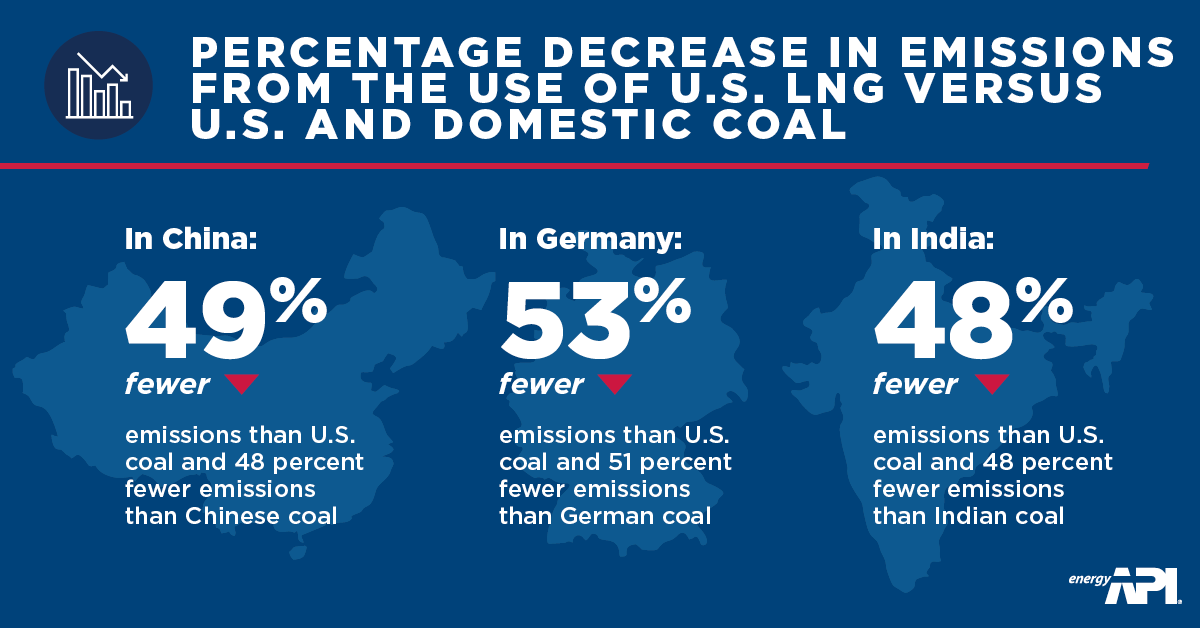Study: New Lifecycle Analysis of U.S. LNG exports
A study released by API and conducted by researchers at ICF examines the environmental benefits of U.S. natural gas use in China, Germany, and India, finding that using U.S. liquefied natural gas (LNG) rather than coal for electricity generation produces on average 50.5 percent fewer greenhouse gas (GHG) emissions in all base case scenarios studied.

Looking at cases in China, Germany and India, the study, “Update to the Life-Cycle Analysis of GHG Emissions for US LNG Exports,” demonstrates the importance of natural gas for achieving global emissions reductions. In China, coal still makes up 66 percent of power generation – in India, it’s 74 percent, and in Germany it also remains high – nearly 30 percent. Coal generation in the U.S. has fallen from roughly 50 percent in 2005 to 24 percent in 2019, while natural gas generation has increased from 19 percent to nearly 40 percent in the same period. This transition has been instrumental to the U.S. reducing emissions in the power sector by 25% from 2008 to 2018.
“This study underscores what we have known for quite some time – that U.S. natural gas is a far cleaner option than coal for electricity generation, especially in key markets in China, Germany and India. U.S. LNG exports can help accelerate environmental progress across the globe, enabling nations to transition to cleaner natural gas to reduce emissions and address the global risks of climate change.” – Director of Market Development Dustin Meyer
Other key findings from the study can be found below:
- Percentage decreases in emissions from the use of U.S. LNG versus U.S. and domestic coal:
- In China: U.S. LNG delivers 48 percent fewer emissions than Chinese coal and 49 percent fewer emissions than U.S. coal
- In Germany: U.S. LNG delivers 53 percent fewer emissions than U.S. coal and 51 percent fewer emissions than German coal
- In India: U.S. LNG delivers 48 percent fewer emissions than Indian coal and 48 percent fewer emissions than U.S. coal
- The study found transportation and shipping distance have the least impact on emissions levels in the supply chain, only 1/10 of the total GHG supply chain emissions, demonstrating that the export journey for U.S. LNG has a limited environmental impact.
- Similarly, the study found that export and import terminal operations also only make up 1/10 of the total GHG supply chain emissions.

Downloads
File Size: .2 MB
ICF: Update to the Life-Cycle Analysis of GHG Emissions for US LNG Exports Analysis
File Size: .7 MB


